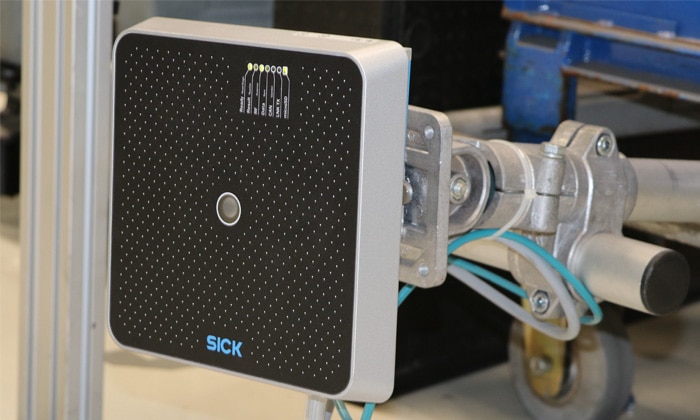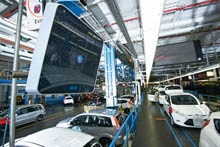What began in 2015 with the Audi A8 is now standard for all production processes at Audi in Neckarsulm in Southern Germany. From body shop to delivery, all models carry a “personal ID” with them: an RFID data carrier (“tag”) from SICK for example. It contains the identification number of the particular vehicle and allows a contactless data exchange of vehicle data via UHF RFID read/write devices.
Digital production and logistics: Audi’s Neckarsulm site lays further foundations for a fully connected factory
This makes the German Audi factory the first in the Volkswagen Group to employ RFID as the primary identification medium across the entire production process. One of the reasons for this extensive digital networking is the growing individualization of customer requests. Whether it be rims, infotainment systems, seat covers or personalizations, manufacturers now provide lots more opportunities for configuring your dream car than just color and engine type. This requires a great deal of variance in Audi’s production. It has therefore become increasingly important to be able to correctly identify each vehicle in production and in the delivery logistics. A transparent and infallible method of knowing what the next step is and how it should occur is required in practically every area. Every Audi model must be guaranteed to roll of the production line as previously configured, and also be guaranteed to arrive at the correct designation. This reliability, compared to the previous situation where different identification technologies were used in the various trades, has been further perfected and standardized through the consistent use of RFID technology.
The standardized RFID technology is opening more and more (automotive) doors
The acronym RFID stands for “Radio Frequency Identification”. Electromagnetic waves enable processes to be automated via contactless reading and storage of data. The corresponding read/write devices operate in the ultrahigh frequency band between 860 and 960 MHz, which is suitable for especially large scanning ranges and fast transmission, and identify the relevant production step for each model.
Every Audi manufactured at this location – from the Audi A4 right through to the fully electric Audi e-tron GT – immediately receives an RFID tag at the first manufacturing step: body construction. This is applied at the right rear section of the car body and then accompanies every vehicle into the paint shop, to assembly, and right through to delivery to its customer. It also brings an additional benefit to Audit. The ability to apply the 30x50 mm sized tag directly to the metal provides greater flexibility in positioning it on the vehicle. And in contrast to previous labels, this transponder remains on the vehicle, even after production is finished. The bracket previously required to attach the label is also no longer required.
The radio-based, passive data medium contains an antenna and a chip. Through the digital exchange of data via the tag, it is possible to localize and identify all workpieces at every station, from body construction to the paint shop and right through to final assembly. Being a passive RFID label, it receives its energy for data transmission from the read/write device.
Reliable, even when things get hot
Both the transponder label and the OMT (on-metal transponder) are suitable for all manufacturing processes, including in demanding environments. The data media exhibit an exceptional resistance to external influences when exposed to extreme conditions in production. The RFID data medium can even withstand the high demands of a paint shop, and are impervious to electrostatic fields, temperatures of 200 °C and above, being sprayed with corrosion inhibitors, or immersion in the paint pre-treatment step.
Clarity and consistency step by step
The infallible identification ensures the next (individualized) step is immediately clear to the person working on the vehicle. The data medium is rendered permanently unreadable at the end of production.
A further advantage of the RFID-based data overview is the consistency throughout the entire process, as opposed to the hotchpotch approach of using different technologies. This allows, for example, more informative analyses of trends as the various read situations can be compared with one another. And the better the information, the greater the potential for optimizing the production process. This enables opportunities for improvement to be exploited, and deviations to be predicted even before they occur.
Thanks to the fully connected solution, the Audi site in Neckarsulm has been able to not only increase the availability but also the efficiency of the plant. In conclusion: The RFID technology provides an important foundation for a fully connected factory and is expected to become standard in all areas of the Audi plants worldwide over the coming years.
Read more
Sensor intelligence in automotive production supports e-mobility
Efficient automotive production with RFID technology
Intelligent RFID technology closes gaps in the supply chain
Keep tire manufacturing processes running smoothly








